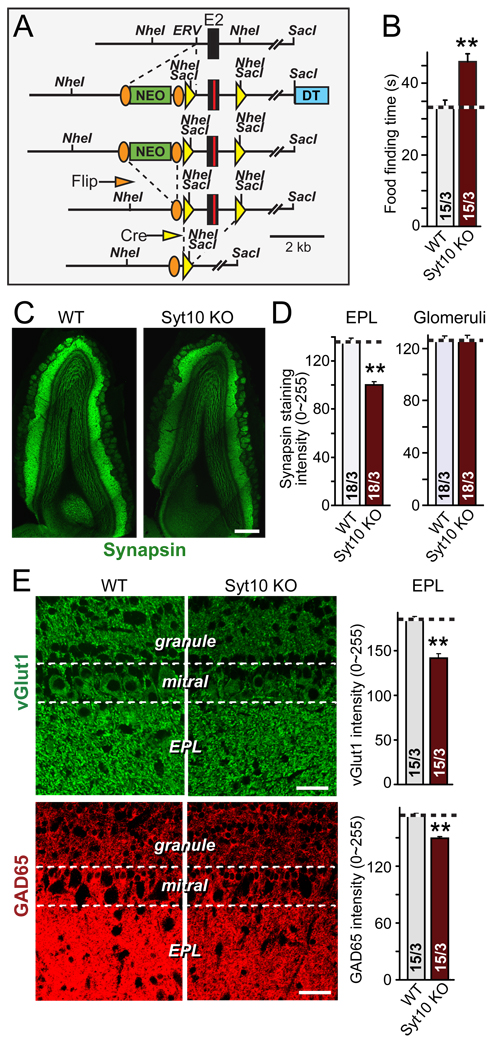Figure 1. Syt10 KO Impairs food-finding behavior and decreases olfactory bulb synapse numbers.
A. Schematic diagram of the generation of conditional and constitutive Syt10 KO mice. Positions of selected restriction enzymes and of coding exon 2 (E2) as well as of frt (orange ovals) and loxP recombination sites (yellow triangles) are indicated (NEO = neomycin resistance cassette; DT = diphtheria toxin). Note that the mutagenesis scheme generates both conditional and constitutive Syt10 KO mice.
B. Constitutive Syt10 KO mice exhibit impaired food-finding behaviors. Summary graph shows mean time (± SEM) required for littermate wild-type and Syt10 KO mice to find a buried cookie. For survival and weight measurements, see Figs. S1A and S1B.
C & D. Representative image (C) and summary graphs of the overall staining intensity (D) of olfactory bulbs from littermate wild-type and constitutive Syt10 KO mice labeled by indirect immunofluorescence for the presynaptic protein synapsin. Note the decrease in synapsin staining in the external plexiform layer (EPL) but not the glomerular layer of Syt10 KO mice (scale bar = 0.4 mm).
E & F. Representative images (left panels) and summary graphs of the staining intensity in the EPL (right panels) of olfactory bulbs from littermate wild-type and Syt10 KO mice analyzed by labeling for the excitatory presynaptic protein vGlut1 (E) and the inhibitory presynaptic protein GAD65 (F). The EPL was analyzed because it is the major synaptic layer in olfactory bulb that contains the reciprocal mitral/granule cell synapses. Note that measurements of neuronal densities and synapse densities in the glomerular layer found no change (Figs. S1E–S1I). Scale bars = 50 µm.
All summary graphs show means ± SEMs; number of sections/number of mice are shown in individual bars. Statistical analyses were performed by Student's t-test comparing KO with wild-type samples (**=p<0.01).

